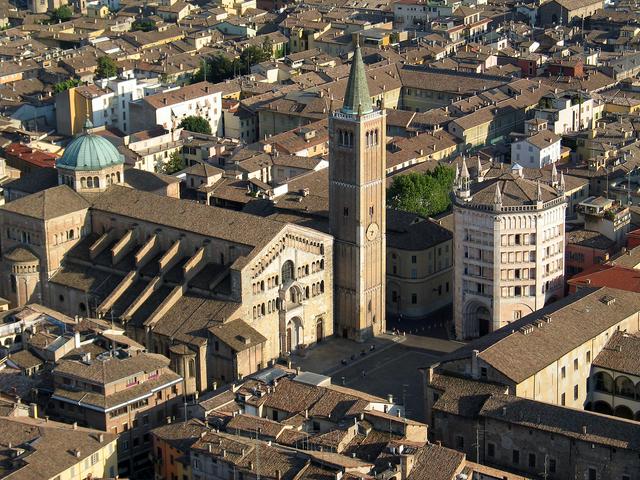 Parma is a city in the province of Parma, part of the Emilia-Romagna region of Italy.
Parma is a city in the province of Parma, part of the Emilia-Romagna region of Italy.
- IAT di Parma, Piazza Garibaldi, 1, +39 0521218889. Daily 09:00-19:00.
- Parma Point, Strada Garibaldi 18. Daily 09:30-19:00. Also sells souvenirs, postcards and other Parma related memorabilia as well as a nice collection of books of local interest.
IAT di Parma, Piazza Garibaldi, 1, +39 0521218889. Daily 09:00-19:00.
Parma Point, Strada Garibaldi 18. Daily 09:30-19:00. Also sells souvenirs, postcards and other Parma related memorabilia as well as a nice collection of books of local interest.
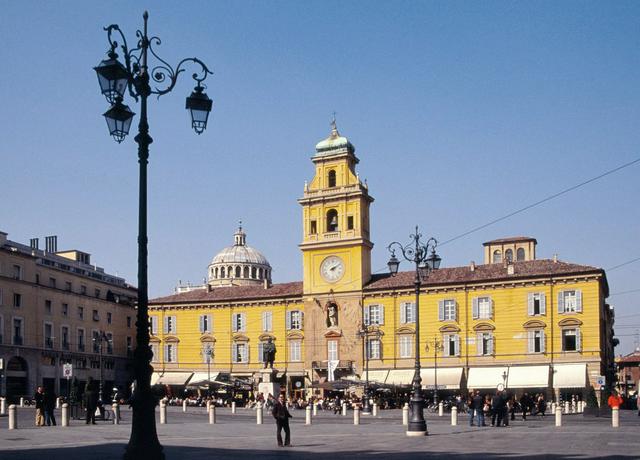
A historical centre of the city.
- Piazza Duomo.
* Cattedrale di Santa Maria Assunta, Piazza Duomo. The cathedral and the adjacent baptistery were built in the late 12th century. The frescoes inside the building are very moving, as well as the relief sculptures on the interior stone. The painting inside the dome of the cathedral is one of the most remarkable paintings of the Renaissance. Entitled Assumption of the Virgin by Correggio, it shows the Virgin Mary being taken up to Heaven. For dramatic effect it is superior to the Sistine Chapel and Titian himself is reputed to have acknowledged that he could not have achieved this effect. Unfortunately the prior who commissioned the work was rather conservative and Correggio never worked in Parma again.
* Battistero di San Giovanni. The baptistery was designed by Benedetto Antelami and is constructed from a pink marble called rosso di Verona. The marble appears to change color depending on how the sun hits it. It is one of the most recognized medieval structures in the country.
* Palazzo Episcopale, Piazza Duomo, 1. The Bishop's palace has a Romanesque appearance. Its construction began in the 11th century, then continued in th 15th, with some restorations made during the course of the 20th century.
- Palazzo della Pilotta. The palace was named after the Basque ball game pelota once practiced in one of the courtyards, is a 16th-century complex of buildings constructed as court to the famed Renaissance Farnese family. It was said to be one of the finest in all of Italy. The Palazzo della Pilotta houses a number of museums:
* Galleria Nazionale, Piazza della Pilotta, 9/A. Tu-Sa 08:30-19:00 (14:00-19:00 for reduced visits), Su 08:30-14:00. Combined ticket for Gallery, Farnese Theatre and National archaeological museum €10 (14:00-18:30 €5).
* Teatro Farnese. Tu-Su 08:30-14:00. A historic Baroque-style theatre. See Galleria Nazionale.
* Museo archeologico nazionale.
* Biblioteca statale Palatina.
- Camera di San Paolo, Via Melloni, 3/A. Tu-F 08:30-14:00, Sa 08:30-18:00, Su 08:30-14:00. A part of a former apartment of the abbess of the Benedectine Convent of Saint Paul. It's decorated by distinctive Renaissance frescoes. €2.
- Palazzo di Riserva. During the Bourbon times it was a palace for important guests. It now hosts Poste centrale (central Post office), Società parmense di Lettura (Parma Literary society) and the Museo Glauco Lombardi.
* Museo Glauco Lombardi, Strada Garibaldi, 15. Sep-Jun: Tu-Sa 09:30-16:00, Su 09:30-19:00; Jul-Aug: Tu-Sa 09:30-16:00, Su 09:30-14:00. The museum is a particularly interesting and well done. It is documenting the life of Maria Luigia (Marie Louise), the second wife of Napoleon Bonaparte and the Duchess of Parma. The museum is very personal and engaging with many artifacts and belongings of the gifted, talented and well educated Maria. Well worth the visit. €5.
- Piazza Giuseppe Garibaldi. It is there the a forum of the Roman Colony, founded in 183 BC. The square served as a hub over Via Aemilia, the ancient Roman road. Today the modern square contains shops and restaurants.
* Palazzo del Governatore. With a façade dating to 1760 and an astronomical clock.
* Palazzo del Municipio. The 13th-century town hall.
- Monastero di San Giovanni Evangelista, Piazzale San Giovanni, 1. M-W F Sa 09:00-11:45, 15:00-17:00. The church has a Baroque facade, while the convent and it's cloisters are in Renaissance style. Free admission.
* Chiesa di San Giovanni. M-Sa 08:30-11:45, 15:00-17:30, Su 15:00-17:30.
* Antica Spezieria di San Giovanni, Borgo Pipa, 1/A. Tu-Sa 08:30-14:00. An old pharmacy of the monastery. €2.
- Basilica di Santa Maria della Steccata, Piazza della Steccata, 9. 07:30-12:00, 15:00-18:30. A prominent Renaissance church.
- Orto Botanico, Via Farini 90, +39 0521 903433. M-Th 09:00-13:00, 14:30-17:00 (summer 18:00), F 09:00-13:00. Admission free.
Piazza Duomo.
* Cattedrale di Santa Maria Assunta, Piazza Duomo. The cathedral and the adjacent baptistery were built in the late 12th century. The frescoes inside the building are very moving, as well as the relief sculptures on the interior stone. The painting inside the dome of the cathedral is one of the most remarkable paintings of the Renaissance. Entitled Assumption of the Virgin by Correggio, it shows the Virgin Mary being taken up to Heaven. For dramatic effect it is superior to the Sistine Chapel and Titian himself is reputed to have acknowledged that he could not have achieved this effect. Unfortunately the prior who commissioned the work was rather conservative and Correggio never worked in Parma again.
* Battistero di San Giovanni. The baptistery was designed by Benedetto Antelami and is constructed from a pink marble called rosso di Verona. The marble appears to change color depending on how the sun hits it. It is one of the most recognized medieval structures in the country.
* Palazzo Episcopale, Piazza Duomo, 1. The Bishop's palace has a Romanesque appearance. Its construction began in the 11th century, then continued in th 15th, with some restorations made during the course of the 20th century.
Palazzo della Pilotta. The palace was named after the Basque ball game pelota once practiced in one of the courtyards, is a 16th-century complex of buildings constructed as court to the famed Renaissance Farnese family. It was said to be one of the finest in all of Italy. The Palazzo della Pilotta houses a number of museums:
* Galleria Nazionale, Piazza della Pilotta, 9/A. Tu-Sa 08:30-19:00 (14:00-19:00 for reduced visits), Su 08:30-14:00. Combined ticket for Gallery, Farnese Theatre and National archaeological museum €10 (14:00-18:30 €5).
* Teatro Farnese. Tu-Su 08:30-14:00. A historic Baroque-style theatre. See Galleria Nazionale.
* Museo archeologico nazionale.
* Biblioteca statale Palatina.
Camera di San Paolo, Via Melloni, 3/A. Tu-F 08:30-14:00, Sa 08:30-18:00, Su 08:30-14:00. A part of a former apartment of the abbess of the Benedectine Convent of Saint Paul. It's decorated by distinctive Renaissance frescoes. €2.
Palazzo di Riserva. During the Bourbon times it was a palace for important guests. It now hosts Poste centrale (central Post office), Società parmense di Lettura (Parma Literary society) and the Museo Glauco Lombardi.
* Museo Glauco Lombardi, Strada Garibaldi, 15. Sep-Jun: Tu-Sa 09:30-16:00, Su 09:30-19:00; Jul-Aug: Tu-Sa 09:30-16:00, Su 09:30-14:00. The museum is a particularly interesting and well done. It is documenting the life of Maria Luigia (Marie Louise), the second wife of Napoleon Bonaparte and the Duchess of Parma. The museum is very personal and engaging with many artifacts and belongings of the gifted, talented and well educated Maria. Well worth the visit. €5.
Piazza Giuseppe Garibaldi. It is there the a forum of the Roman Colony, founded in 183 BC. The square served as a hub over Via Aemilia, the ancient Roman road. Today the modern square contains shops and restaurants.
* Palazzo del Governatore. With a façade dating to 1760 and an astronomical clock.
* Palazzo del Municipio. The 13th-century town hall.
Monastero di San Giovanni Evangelista, Piazzale San Giovanni, 1. M-W F Sa 09:00-11:45, 15:00-17:00. The church has a Baroque facade, while the convent and it's cloisters are in Renaissance style. Free admission.
* Chiesa di San Giovanni. M-Sa 08:30-11:45, 15:00-17:30, Su 15:00-17:30.
* Antica Spezieria di San Giovanni, Borgo Pipa, 1/A. Tu-Sa 08:30-14:00. An old pharmacy of the monastery. €2.
Basilica di Santa Maria della Steccata, Piazza della Steccata, 9. 07:30-12:00, 15:00-18:30. A prominent Renaissance church.
Orto Botanico, Via Farini 90, +39 0521 903433. M-Th 09:00-13:00, 14:30-17:00 (summer 18:00), F 09:00-13:00. Admission free.

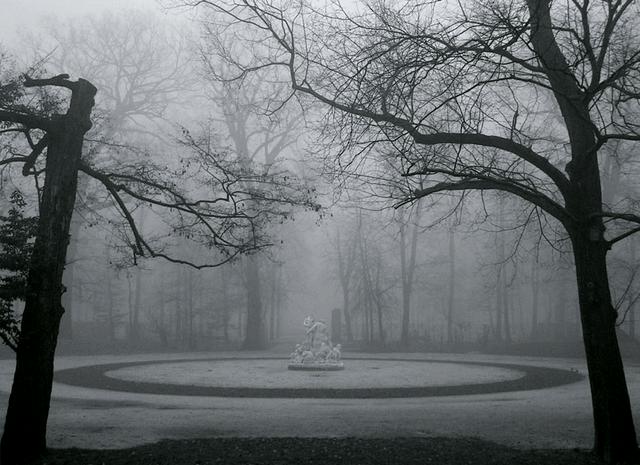 Oltretorrente is historical district at the western side of the Parma stream.
Oltretorrente is historical district at the western side of the Parma stream.
- Parco Ducale. Nov-Mar: 07:00-20:00; Apr-Oct: 06:00-24:00. The Ducal park was founded in the 16th century. In 18th century it was converted into a French park. On the western end of the park there is Peschiera, a fish-pond with a Baroque fountain Fontana del Trianon. A bit north-east of the pond there is rotunda of Tempietto d'Arcadia (aka Tempietto di Diana) and a bit further east a sculpture Sileno ed Egle (1765) by Baptiste Boudard (like all the other statues in the park).
* Palazzo del Giardino, Parco Ducale, 3 (presumably you need to wait by a security gate to the right of the palace for a palace's guide to collect you. Closed to visitors until further notice (was M-Sa 09:00-12:00). The palace was built in 16th century for Ottavio Farnese. In the 18th century, it was expanded. It's the headquarters of the Command of the Carabinieri Legion of Parma.
* Palazzetto Eucherio San Vitale, Parco Ducale, 87/A. Apr-Oct: Sa Su 10:30-13:00, 15:00-18:30. It is an interesting example of Renaissance architecture. There is a fresco there attributed to Parmigianino and walls painted by Cosimo da Piazza. Free admission.
- Ospedale vecchio, Strada D'Azeglio, 45/A, +39 0521031031. check the opening times of the Historical archive and the Oratory of St. Ilario. A rare example of hospital architecture. Today the building is home to numerous cultural institutions including the Municipal Archives State Archives, the Public Library, the Library Bizzozero, the Municipal Newspaper Library, the Balestrazzi Library and the Municipal Library. Free.
* Oratorio di Sant'Ilario, Via D'Azeglio, 43. Th 09:00-12:00, 15:00-17:30. Free.
- Chiesa di Santa Croce. A Romanesque church with 17th-century frescoes.
- Chiesa della Santissima Annunziata. A Baroque church of an unusual form.
Parco Ducale. Nov-Mar: 07:00-20:00; Apr-Oct: 06:00-24:00. The Ducal park was founded in the 16th century. In 18th century it was converted into a French park. On the western end of the park there is Peschiera, a fish-pond with a Baroque fountain Fontana del Trianon. A bit north-east of the pond there is rotunda of Tempietto d'Arcadia (aka Tempietto di Diana) and a bit further east a sculpture Sileno ed Egle (1765) by Baptiste Boudard (like all the other statues in the park).
* Palazzo del Giardino, Parco Ducale, 3 (presumably you need to wait by a security gate to the right of the palace for a palace's guide to collect you. Closed to visitors until further notice (was M-Sa 09:00-12:00). The palace was built in 16th century for Ottavio Farnese. In the 18th century, it was expanded. It's the headquarters of the Command of the Carabinieri Legion of Parma.
* Palazzetto Eucherio San Vitale, Parco Ducale, 87/A. Apr-Oct: Sa Su 10:30-13:00, 15:00-18:30. It is an interesting example of Renaissance architecture. There is a fresco there attributed to Parmigianino and walls painted by Cosimo da Piazza. Free admission.
Ospedale vecchio, Strada D'Azeglio, 45/A, +39 0521031031. check the opening times of the Historical archive and the Oratory of St. Ilario. A rare example of hospital architecture. Today the building is home to numerous cultural institutions including the Municipal Archives State Archives, the Public Library, the Library Bizzozero, the Municipal Newspaper Library, the Balestrazzi Library and the Municipal Library. Free.
* Oratorio di Sant'Ilario, Via D'Azeglio, 43. Th 09:00-12:00, 15:00-17:30. Free.
Chiesa di Santa Croce. A Romanesque church with 17th-century frescoes.
Chiesa della Santissima Annunziata. A Baroque church of an unusual form.
- Castello di Torrechiara. A massive 15th-century castle.
Castello di Torrechiara. A massive 15th-century castle.
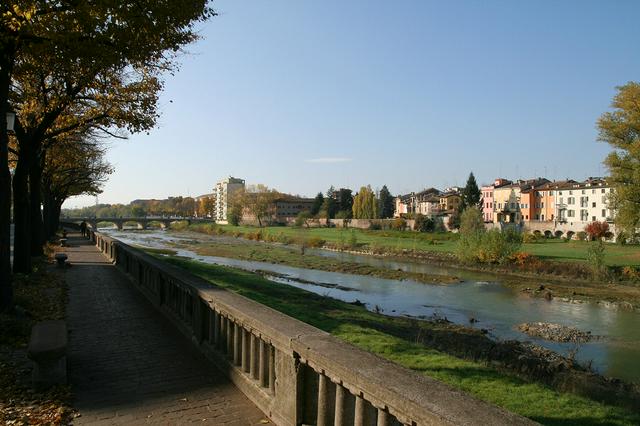 Attend the opera at the gorgeous and world-famous Teatro Regio, known for its passionate and critical local opera aficionados. Buy tickets early as the opera is extremely popular in Parma and tickets sell out early. The Festival Verdi celebrates the famous and adored Parma resident Giuseppe Verdi throughout the month of October every year.
Attend the opera at the gorgeous and world-famous Teatro Regio, known for its passionate and critical local opera aficionados. Buy tickets early as the opera is extremely popular in Parma and tickets sell out early. The Festival Verdi celebrates the famous and adored Parma resident Giuseppe Verdi throughout the month of October every year.
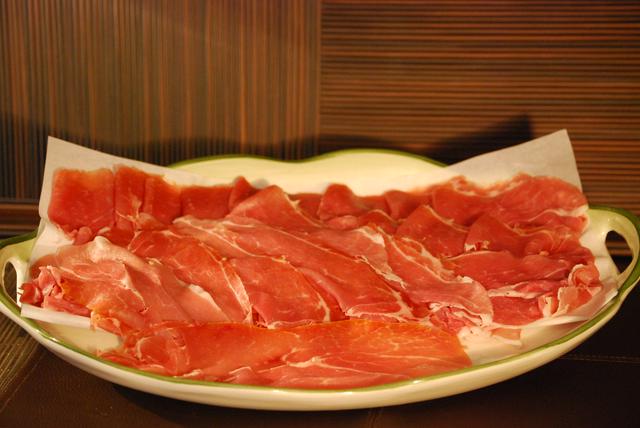 If you are in Parma, your trip is not complete until you try a hunk of its eponymous cheese, Parmigiano-Reggiano. Known the world over, Parmigiano-Reggiano cheese owes its quality to its source. The cows that produce the milk graze only on grass and hay in fields around the city. The cheese is made and aged from 18 months to over 30.
If you are in Parma, your trip is not complete until you try a hunk of its eponymous cheese, Parmigiano-Reggiano. Known the world over, Parmigiano-Reggiano cheese owes its quality to its source. The cows that produce the milk graze only on grass and hay in fields around the city. The cheese is made and aged from 18 months to over 30.
Another food you must try in Parma is the local cured ham, Prosciutto di Parma. Parma's Prosciutto is the gold standard for salumi. The hams are cured and aged in temperature and humidity controlled rooms for at least 10 months. The result is a salty, sweet, piece of meat that is sliced razor thin and can be eaten all by its self, or as a part of many regional dishes. It is delicious served simply over a plate of summer melon. As far as salumi goes though, Culatello is king. Unfortunately government regulation on the production of Culatello has driven it nearly to extinction, but there are still rogue producers who cure the meat in cellars. Culatello differs from Prosciutto in that it is made from the fillet cut of the ham as opposed to the whole ham. If you can get your hands on some genuine Culatello, do it, because it is next to impossible to find in the U.S. and can go for around US$60 a pound.
Parma is also known for its delicate stuffed pastas and outdoor markets. Be sure to take advantage of the fresh seasonal vegetables that Parma has to offer.
- K2. An ice cream shop. The nuns make a gelato in the shape of a flower in seconds.
- Trattoria I Corrieri, Via Conservatorio 1 (near the law faculty of the university. A typical restaurant to have dinner. Try some torta fritta, and prosciutto di Parma and all the other salami and coppa specialities from that region as a starter, followed by the typical tortelli. If you take Tris di Tortelli, you will enjoy that special type of pasta, one filled zucca (pumpkin), radicchio and ricotta e spinaci (spinach & cheese).
- Osteria del Gesso, Via Ferdinando Maestri 11, +39 0521 230505. Osteria del Gesso is a small, quaint restaurant down a narrow street in historic center city. The menu is based on the typical cuisine of the region. The food is well prepared and delicious, particularly the tortelli di erbetta and crespelle di grano. The staff did not speak English, but are helpful and provide excellent service.
- La Forchetta, borgo San Biagio 6, +39 0521 208812. Excellent ristorante just off the Piazza del Duomo serving typical regional cuisine. Superb tortelli di zucca and a very interesting and creative appetizer of gelato of Parmesan cheese with a fig preserve and balsamic vinegar.
- Trattoria delTribunale, Vicolo Politi 5, +39 0521 285527. Excellent traditional restaurant in the city center recommended by the Slow Food editors. The guanciale (pork cheek) diavolo was tender, sweet and succulent with just the right amount of spiciness. The local specialty, anolini in brodo was also excellent.
- Hotel & Ristorante Leon D'oro, V.le Fraiit 4a, +39 0521 773182. A family-owned restaurant that has been around since 1917. They serve traditional food near the train station and are more of a local place as opposed to a tourist location. They are known for their salumi and handmade pastas, as well as their extensive wine list.
- La Forchetta, Borgo San Biagio 6/D, +39 0521 208812. Great food and wine in nice setting both inside and outside. €45 including wine.
K2. An ice cream shop. The nuns make a gelato in the shape of a flower in seconds.
Trattoria I Corrieri, Via Conservatorio 1 (near the law faculty of the university. A typical restaurant to have dinner. Try some torta fritta, and prosciutto di Parma and all the other salami and coppa specialities from that region as a starter, followed by the typical tortelli. If you take Tris di Tortelli, you will enjoy that special type of pasta, one filled zucca (pumpkin), radicchio and ricotta e spinaci (spinach & cheese).
Osteria del Gesso, Via Ferdinando Maestri 11, +39 0521 230505. Osteria del Gesso is a small, quaint restaurant down a narrow street in historic center city. The menu is based on the typical cuisine of the region. The food is well prepared and delicious, particularly the tortelli di erbetta and crespelle di grano. The staff did not speak English, but are helpful and provide excellent service.
La Forchetta, borgo San Biagio 6, +39 0521 208812. Excellent ristorante just off the Piazza del Duomo serving typical regional cuisine. Superb tortelli di zucca and a very interesting and creative appetizer of gelato of Parmesan cheese with a fig preserve and balsamic vinegar.
Trattoria delTribunale, Vicolo Politi 5, +39 0521 285527. Excellent traditional restaurant in the city center recommended by the Slow Food editors. The guanciale (pork cheek) diavolo was tender, sweet and succulent with just the right amount of spiciness. The local specialty, anolini in brodo was also excellent.
Hotel & Ristorante Leon D'oro, V.le Fraiit 4a, +39 0521 773182. A family-owned restaurant that has been around since 1917. They serve traditional food near the train station and are more of a local place as opposed to a tourist location. They are known for their salumi and handmade pastas, as well as their extensive wine list.
La Forchetta, Borgo San Biagio 6/D, +39 0521 208812. Great food and wine in nice setting both inside and outside. €45 including wine.
An aperitivo in Via Farini is something you should not miss. There are several bars in that little street where you will find a lot of people standing outside with a Martini or a Sprizz con Aperol at around 18:00, enjoying the free buffet that is offered when you buy a drink.
Try a bottle of the local sparkling red wine called Lambrusco, great on its own and perfect with much of the local cuisine. It can be purchased in virtually any bar or corner shop and is very inexpensive.
- Sabbioneta — a Renaissance ideal town. It is a UNESCO World Heritage site on par with Mantua.
- Reggio Emilia
- Modena
- Bologna
- Brescia
- Milan
- La Spezia
